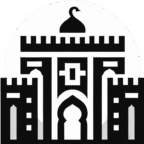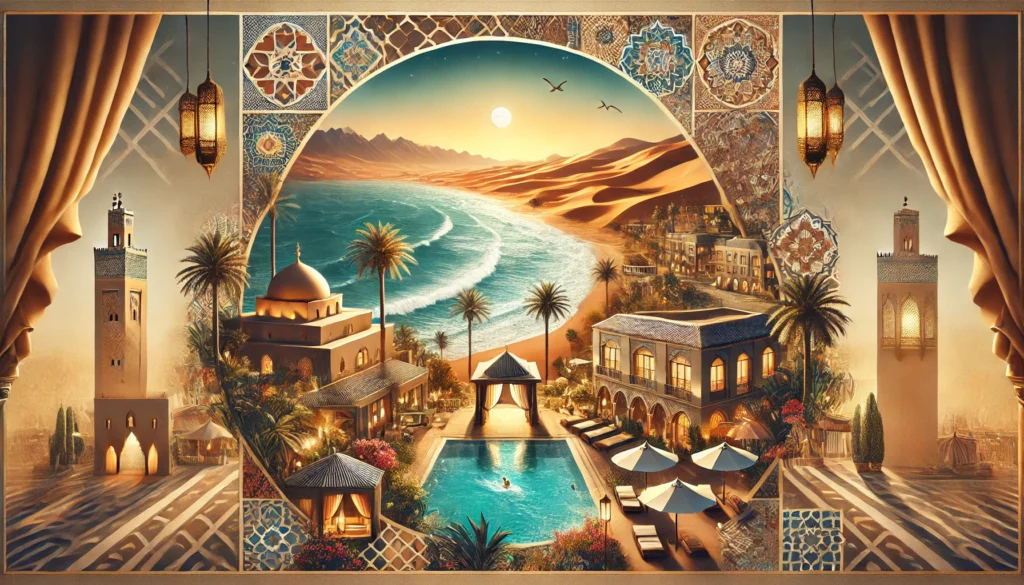Introduction
Casablanca tourism has captivated global travelers for decades, mainly American tourists. As Morocco’s largest city and economic powerhouse, Casablanca showcases an unmatched combination of historical sites cultural attractions and contemporary development. The Atlantic waterfront position makes it vital for international trade and political operations through all periods of history. This article delves into Casablanca’s historical evolution, strategic geographic significance, and status as a top tourist destination.istory, culture, and
The Historic Evolution of Casablanca
Locally named Dar El Beida the city also known as Casablanca has developed steadily through its rich history back to ancient times. The settlement began as Berber but the People of the Sea established it before its peak came during the Roman empire. . The eighth-century Arab arrival brought Casablanca to prominence as a regional force at a time when its social components deepened their foundation.
Casablanca Under French Influence
Throughout the 20th century Casablanca achieved rising importance as part of the French colonial administration framework. Through modernization efforts the French made Casablanca into a major seaboard port and commercial hub. Modern-Day Casablanca retains its distinctive art deco buildings which reunited European design with Moroccan building traditions as seen during the previous era.
The Strategic Geographic Significance of Casablanca
Casablanca benefits strongly from its strategic Atlantic Ocean position.. The port city is a gateway for trade between Europe, Africa, and the Americas. Its position has made it essential in global commerce and political affairs.
A Political and Economic Powerhouse
Casablanca has been at the forefront of Moroccan politics and economic development. As the country’s financial capital, it hosts key political summits and is home to Morocco’s largest corporations. The city’s political and business center status attracts diplomats, investors, and tourists alike.
Casablanca’s Role in WWII
Casablanca’s Role in WWII
The city achieved international status during World War II because it functioned as an essential location where Allied leaders conducted their conferences. At the 1943 Casablanca Conference Franklin D. Roosevelt met Winston Churchill to establish the city as a primary focal point for world politics.
Casablanca’s Appeal to American Tourists
Tourism to Casablanca attracts American travelers with its unmatched beauty. Visitors can experience unique things at both the Hassan II Mosque which ranks among the biggest religious establishments on Earth and other prime locations. Diverse travelers find attraction in the combination between Moroccan cultural traditions and contemporary appreciation in the area.
Cultural Attractions and Modern Entertainment
The Old Medina attracts tourists because it presents both dynamic shopping markets and authentic arts and crafts. The single neighborhood of Habous merges European architectural elements into Moroccan construction to create a special shopping environment. Casablanca combinesitage sites and contemporary attractions which include shopping malls alongside high-end restaurants and cultural centers such as the Villa des Arts.
Exploring Casablanca’s Culinary Scene
Casablanca’s culinary offerings reflect its multicultural history. Guests at Marrakech can experience the Moroccan cuisine favorites tagine and couscous together with French bread choices and seafood dishes from the Mediterranean. The dining establishments situated in the city employ Atlantic ocean vistas from top rooftops to create unforgettable dining moments.
Tourists will discover interesting sights to see in the city.
Hassan II Mosque
A masterpiece of architecture attracts people to the waterfront where this building stands. Visitors flock to the mosque each year because of its detailed mosaic artwork and the 210-meter tall minaret. Many visitors choose guided tours of the mosque to learn about Casablanca’s religious heritage and cultural rich heritage.
The Corniche
The Corniche is a picturesque beachfront promenade with luxury hotels, cafes, and clubs. It is a perfect spot for tourists to relax and enjoy the sea breeze. American tourists often highlight this area for its vibrant nightlife and scenic ocean views.
The Old Medina and the Central Market
Visitors who tour through the Old Medina can discover Casablanca’s authentic traditional history. The Central Market offers tourists a sensory experience through its presentation of spices and handmade items and street foods while showing traditional roots of Morocco.
Why Casablanca Stands Out in Moroccan Tourism
Casablanca separates itself from other Moroccan cities through its combination of historic neighborhoods together with modern city centers. From the traditional sights of Marrakech to Fes’ deep cultural areas the city of Casablanca introduces a modern style. The city’s position as a political and economic capital enriches its tourism options through a combination of historical background and contemporary hospitality features.
A Gateway for American Visitors
Due to its strategic location and international airport, Casablanca is a popular entry point for American travelers. The city’s well-connected transportation network makes it an ideal base for exploring other Moroccan attractions.
Sustainable Tourism Efforts
Casablanca devotes more investment to sustainable tourism by establishing environmentally conscious eco-hotels along with green milestone programs. The city’s sustainable tourism activations match modern responsible travel advances among American travelers.
Conclusion
Casablanca develops opportunities for visitors through a mixture of historical discoveries alongside contemporary entertainment venues and a positioning that centers on regional logistical advantages. Casablanca stands out as an exceptional Moroccan destination because of its long history combined with geographical benefits and strong American tourist demand.
Sources for More Reading
- Moroccan National Tourist Office
- UNESCO World Heritage
- Historical Overview of Casablanca
- Hassan II Mosque Official Site
- Cultural Heritage of Casablanca
others Links



